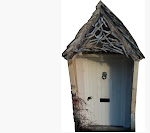 Today is the last in the Guardian's 'Great fairytales' series and the theme is 'Beastly Tales'. There's a fantastic afterword by Marina Warner which looks at the role of animals in fairy tales, I'm going to use an excerpt of it as a foreword here as I think it also serves as a good introduction to the different kinds of animal tales that feature in today's booklet:
Today is the last in the Guardian's 'Great fairytales' series and the theme is 'Beastly Tales'. There's a fantastic afterword by Marina Warner which looks at the role of animals in fairy tales, I'm going to use an excerpt of it as a foreword here as I think it also serves as a good introduction to the different kinds of animal tales that feature in today's booklet:'The anthropologist Claude Lévi-Strauss commented that animals were "bons à penser" (good to think with), and fairytales speak through beasts to explore common experiences – fear of sexual intimacy, terror and violence and injustice, struggles for survival. A tradition of articulate, anthropomorphised creatures of every kind is as old as literature itself: animal fables and beast fairytales are found in ancient Egypt and Greece and India, and the legendary Aesop of the classics has his storytelling counterparts all over the world, who use crows and ants, lions and monkeys, ravens and donkeys to satirise the follies and vices of human beings and display along the way the effervescent cunning and high spirits of the fairytale genre.
By contrast with animal fables, where something of an animal's observable, actual character helps make the point (monkeys are clever, sharks, well, shark-like, in The Heart of a Monkey from Zanzibar), the beast of fairytale romance comes in fantasy shape – mythological creatures such as a dragon, a snake, a yellow dwarf, or, as AS Byatt translates one such beast, Mme d'Aulnoy's "Le Serpentin vert", as a "great green worm". They belong in a world of romance and psychology rather than satire and practical wisdom.'
Today's first tale is Beauty and the Beast by Jeanne-Marie Le Prince de Beaumont (this link is to a French site which as well as a biography also contains a reproduction of the original text), first published in 1756 in France and 1757 in England, this is usually referred to as an abridgement of the first literary version of the tale by Gabrielle-Suzanne Barbot de Villeneuve. There's an excellent article by Terri Windling about the writers of literary fairy tales in France available online in the JOMA archives which I'd highly recommend if you'd like to find out more about these tales.
Also included in today's booklet are the tales; Hans My Hedgehog by the Brothers Grimm and translated by champion of fairy tales and children's literature Jack Zipes; and The Heart of a Monkey as retold by Andrew Lang from the Lilac Fairy Book.
The illustrations are today provided by Eleanor Davis (the one I've featured above is taken from The Beauty and the Beast) and once again I can't stress enough just how much better represented they are in the paper booklet; my favourite illustration from today is of the forlorn Beast, hunched over an image of Beauty; but you can only see it on the cover of the paper booklet, they've not included it online. If you've missed the paper booklets this week they are all available to buy online here.
I thought I would also give the credits for the whole of this brilliant series here, as they are featured inside the booklets but not anywhere that I could find online:
Editor: Lisa Allardice
Assistant editor: Ginny Hooker
Research: Stephanie Cross
Series editor: Philip Oltermann
Subeditor: Christian Sadler
Art Director: Gavin Brammall
Picture editor: Rachel Vere
Production: Russel Turk (part 1, part 2, part 3), Steve Coady (part 4, part 5, part 6, part 7),
Production editor: Amy Thompson
You can read my other posts on the series here:
Part 1, Part 2, Part 3, Part 4, Part 5 and Part 6









No comments:
Post a Comment